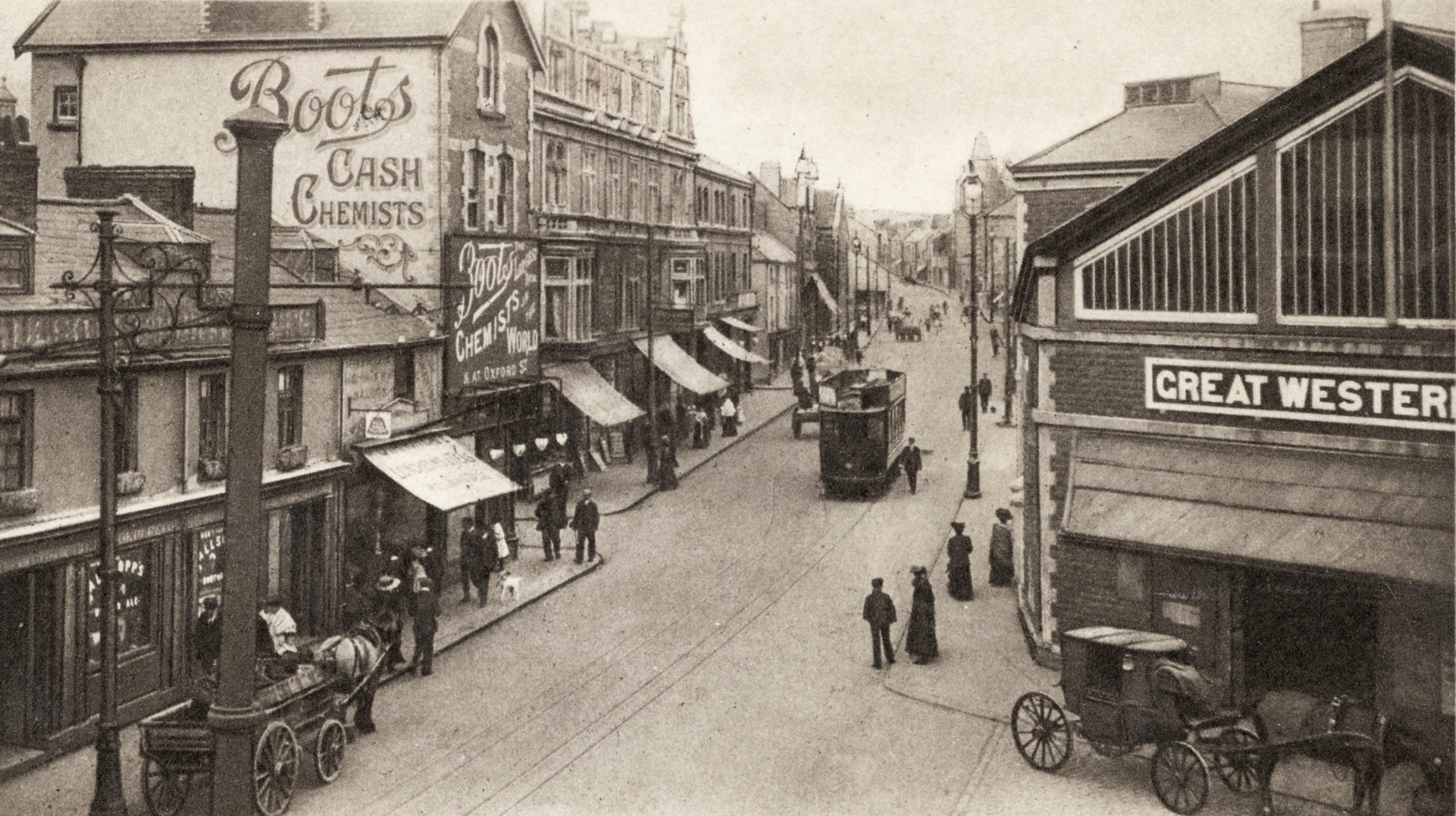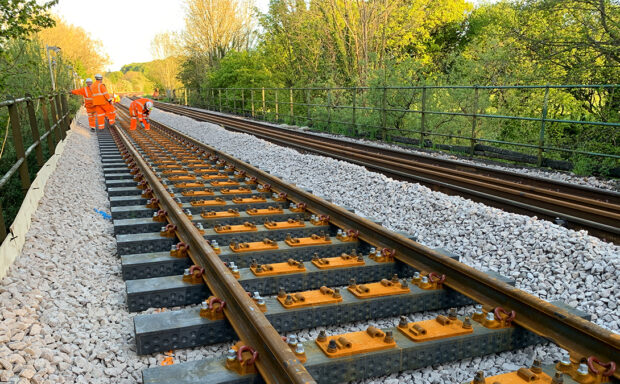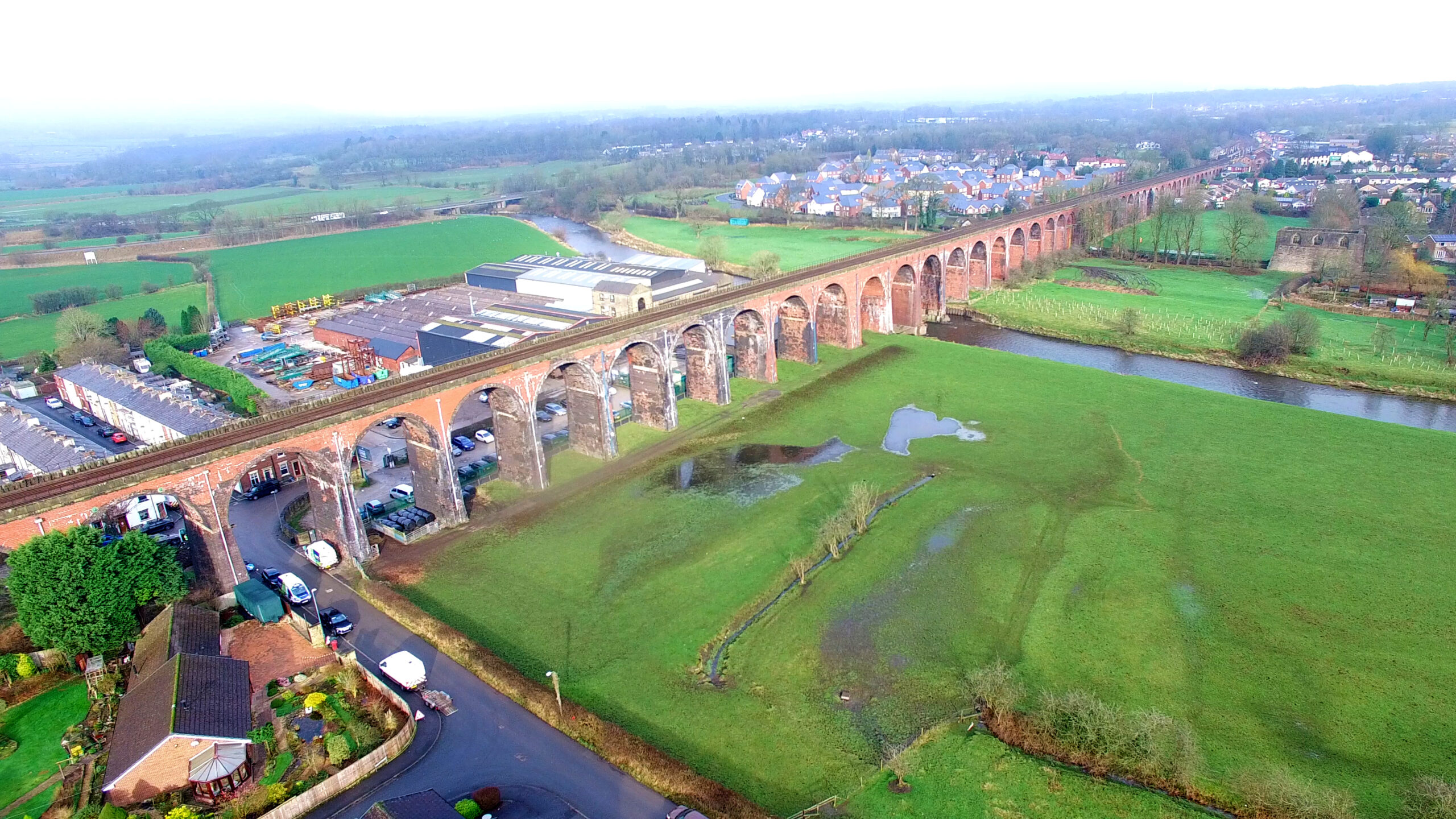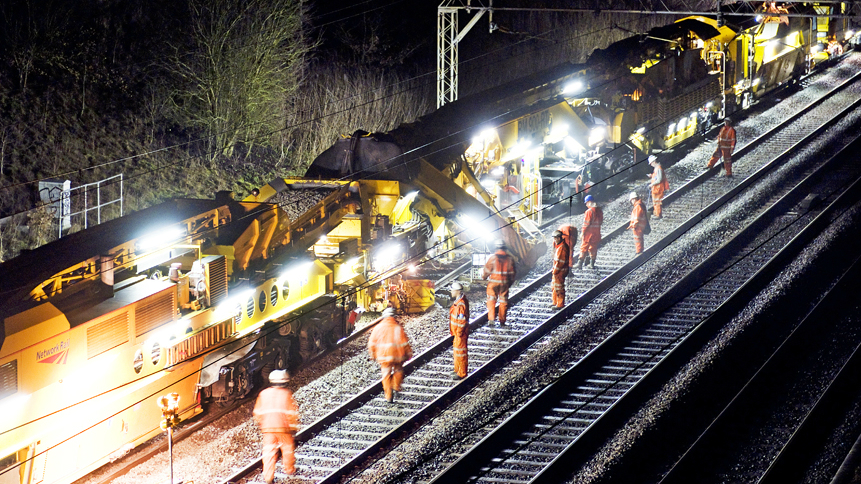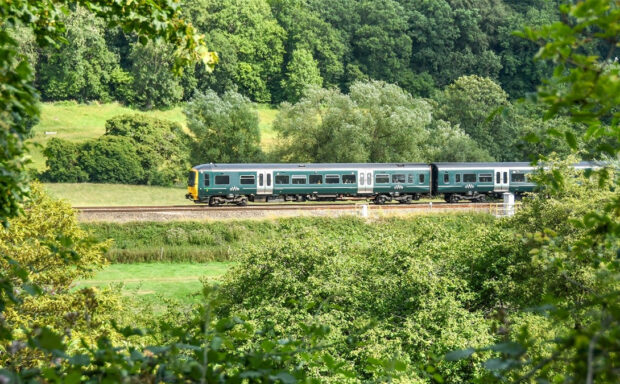A big upgrade to improve your journeys at Swansea has ushered in a new era for the railway station … more than 170 years after it opened.
Swansea railway station has just undergone its biggest refurbishment in more than 10 years after we teamed up with train operator Transport for Wales for a more than £7.5m investment.
To give you more reliable and more comfortable and enjoyable journeys, we have …
Reversed effects of post-war cuts to train capacity at the station by rebuilding almost the entire length of platform four. It’s now 260 metres long – bigger than two football pitches. The improvement means the platform can now accommodate 10-carriage intercity trains.
Provided improved ticket-buying facilities, new toilets, and refurbished space for use by local businesses and community groups.
Given you more seating, new luggage trollies and a new cycle shelter at the front of the station.
Watch this video to find out more:
Remembering Swansea’s heritage
It’s our privilege to look after Britain’s Victorian railway, ensuring old stations are fit for the future while remaining sensitive to their historic features.
But sadly, nothing remains of the original Swansea railway station due to substantial renovations since it opened 171 years ago …
The first train arrived at the station – from Chepstow – on 18 June 1850 to mark the opening of the new South Wales Railway, according an article from The Illustrated London News.
It said: “The demonstration was general throughout the line, extending for a distance of 75 miles: banners floated from every available position; the ships in the several ports of Chepstow, Newport, Cardiff, Port Talbot, Neath and Swansea were gaily decked; and at every station wreaths of flowers and evergreens and triumphal arches abounded.”
A key aim of building the South Wales Railway was to link with a potential ferry port in Fishguard to connect with southern Ireland.
However, the famine in Ireland in 1845 forced the railway to abandon plans to create a corresponding rail link on the Irish side. It wasn’t until 1906 that the line was extended to Fishguard to establish a link for transatlantic traffic.
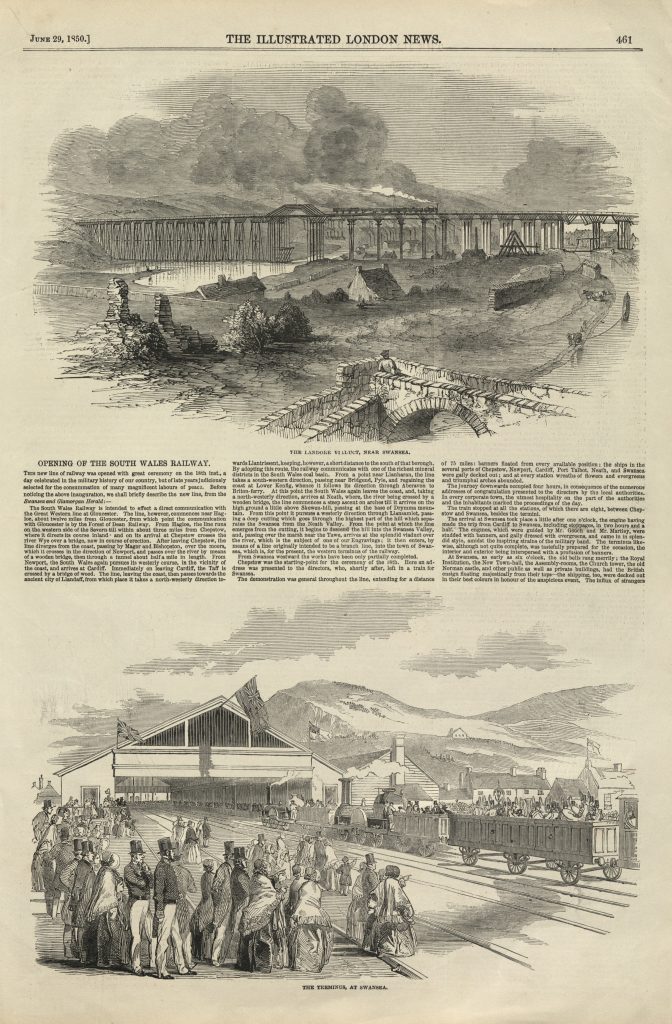
So Swansea – or ‘Swansea High Street’ as it was called until 1968 to reflect the fact there were six other stations – started out life as the terminus for the South Wales Railway.
In its early days, the building was made from wood and had a galvanised iron roof. The Illustrated London News reported it was “not quite complete” on opening day.
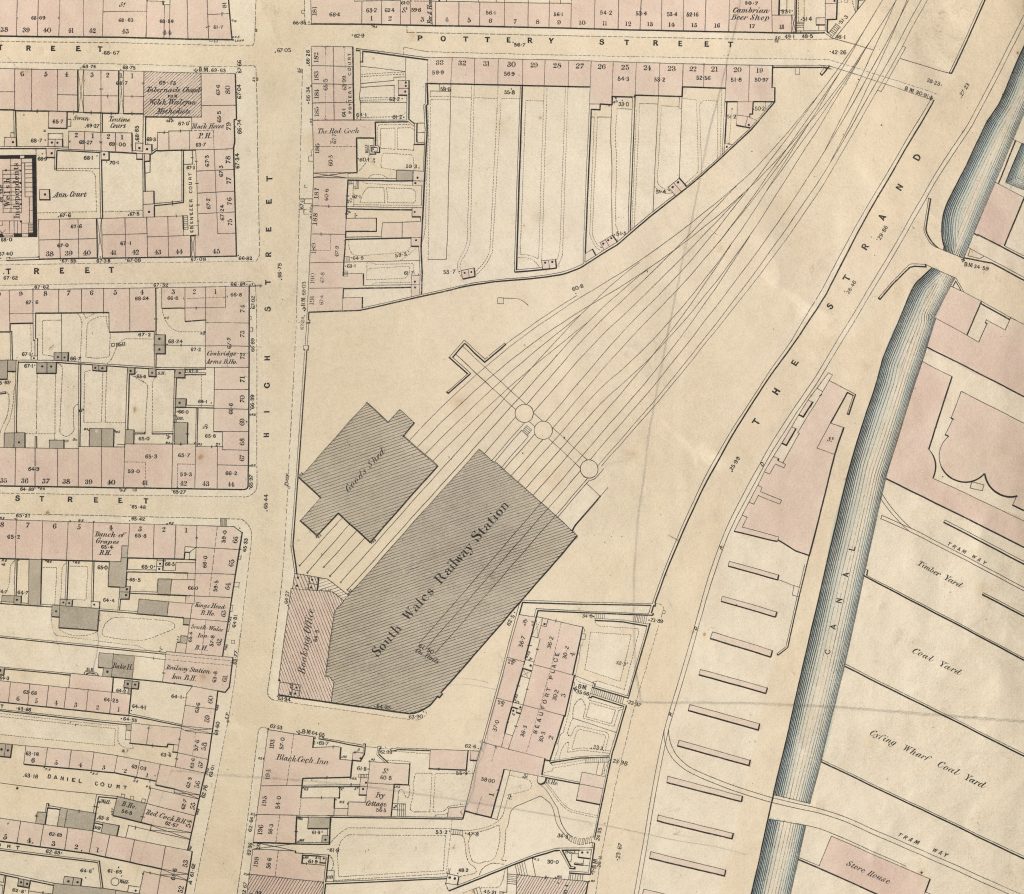
The first notable addition to the station was made in 1877 to 1878 when an office block made from Pennant stone was built facing the High Street on the west side of the station.
In the 1920s, the roof was changed from the all-over roof format to pitched steel-frame awnings over the platforms – the standard GWR pattern at the time.
All change for Swansea’s platforms
Swansea originally had two platforms that ran the length of the building. By the early 20th century, the number had doubled to four and in the 1920s, a fifth was added at the same time the roof was changed.
The platforms were lengthened not long after to reflect the growth in passenger numbers and by the 1930s, the station was completely transformed into the building you see today.
But the nationalisation of the railways and formation of British Railways after WWII meant Swansea’s platforms were scaled back to four. The new rail operator aimed to stem losses incurred from the growth of motoring.
Our latest improvements – and added space for more seats – are great news for Swansea.
Rob Stewart, leader of Swansea Council, said: “With space for bigger trains and upgraded facilities it is a real uplift for the city, which is currently undergoing a £1bn regeneration programme.
“Great transport links are an essential part of any thriving and ambitious city, and these improvements will make such a difference to people travelling to and from here.”
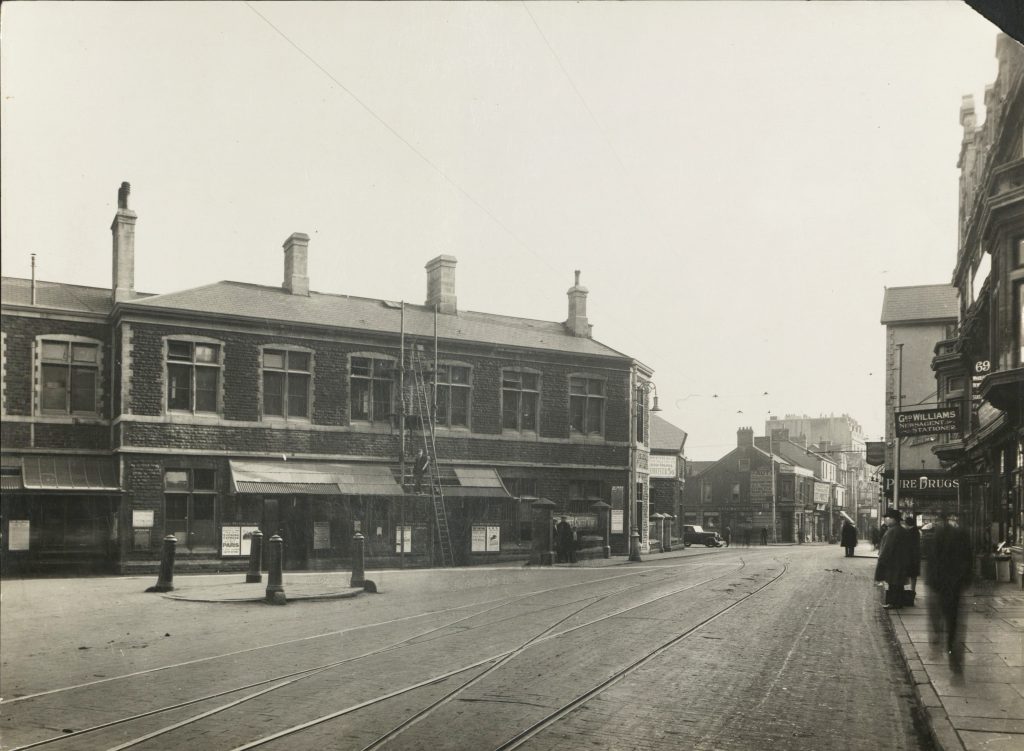
Read more:
Incredible Windrush generation images brought to life
Refurb of world’s largest working mechanical signal box completes
Why the end of the gauge war didn’t standardise Britain’s railway
Love the railway – heritage railways
Meet Britain’s most remote signal box
What happens to signal boxes when they retire?
The Architecture the Railways Built – Severn Bridge Junction
